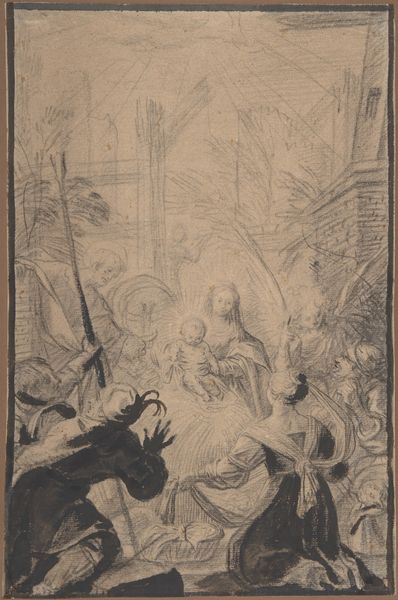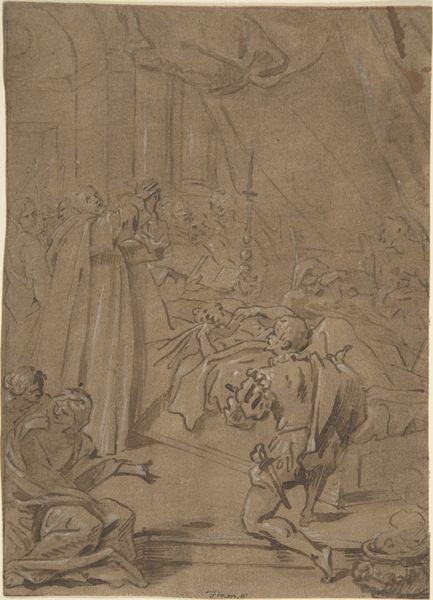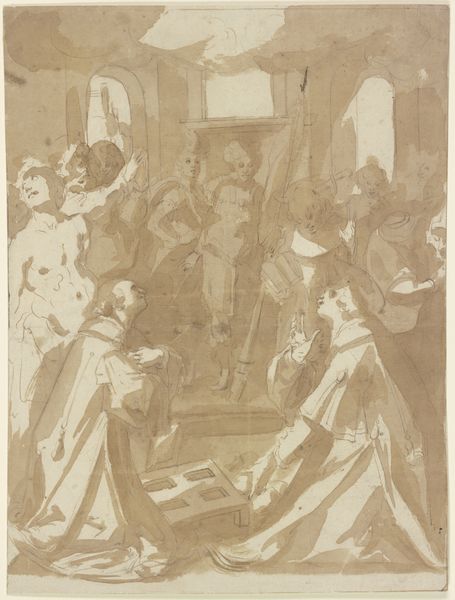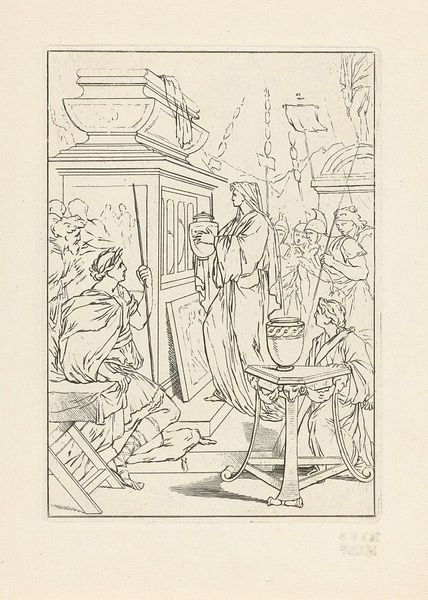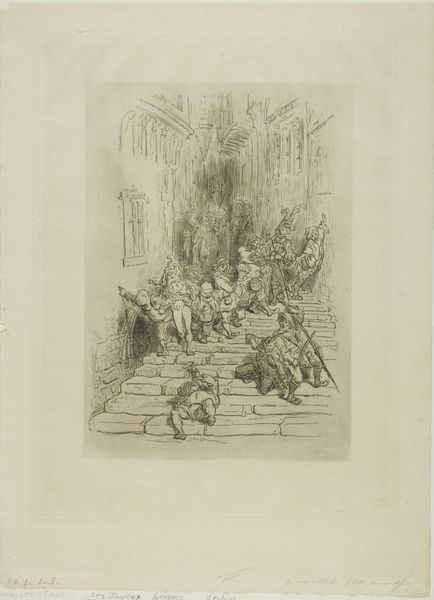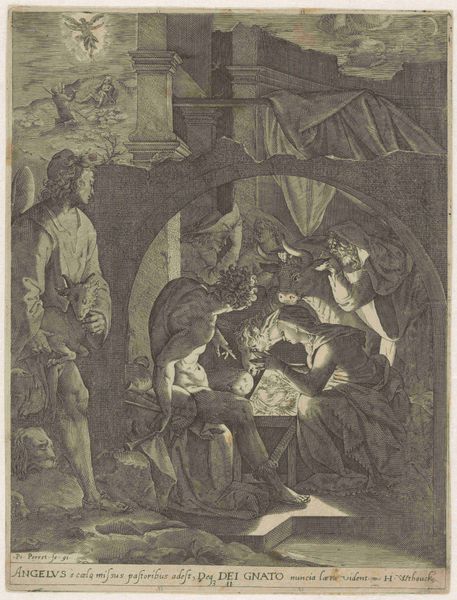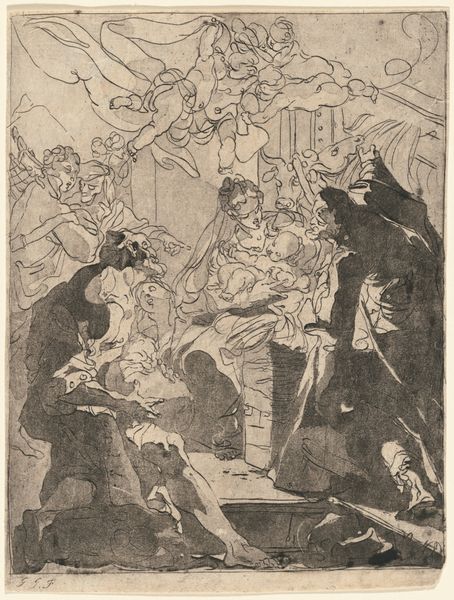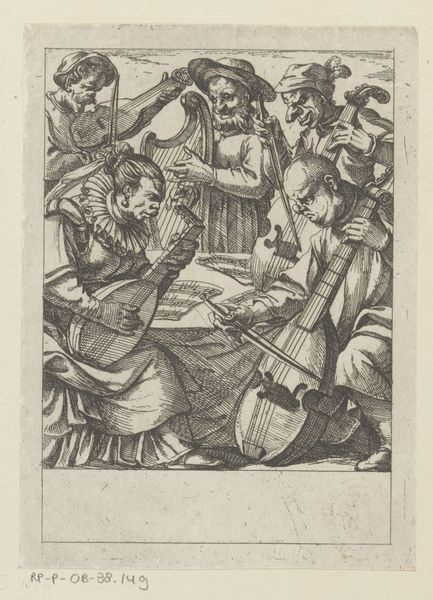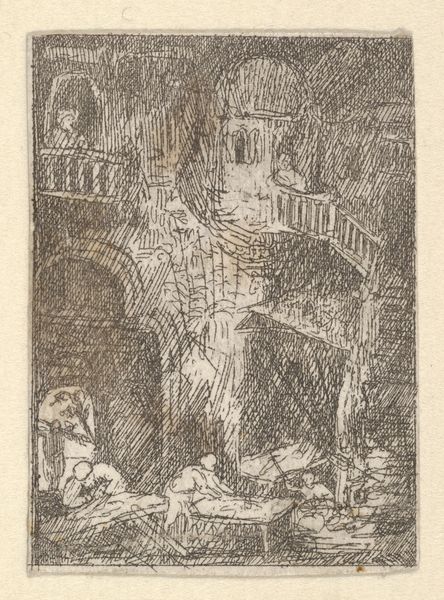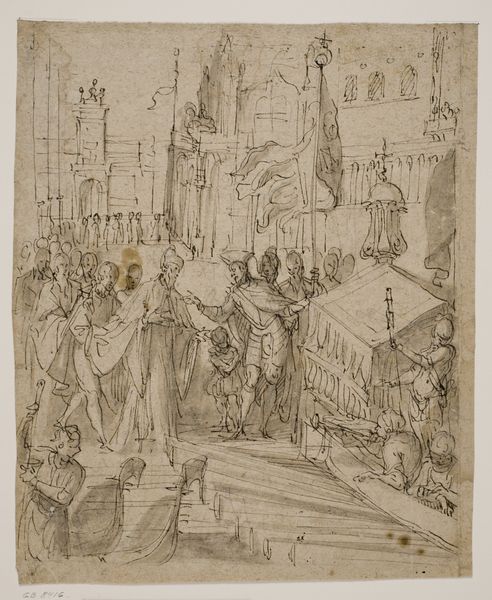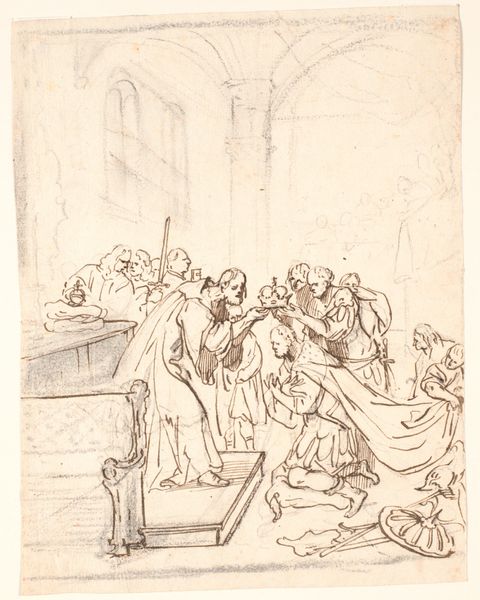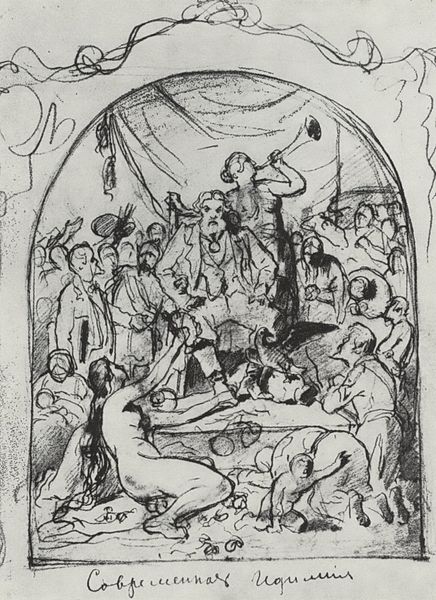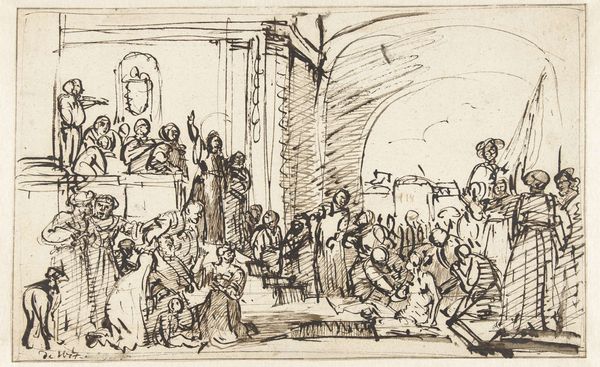
print, woodcut, engraving
#
medieval
#
narrative-art
# print
#
figuration
#
woodcut
#
history-painting
#
engraving
Dimensions: 6 5/8 x 5 11/16 in. (16.83 x 14.45 cm) (image)
Copyright: Public Domain
Curator: This engraving, titled "The Mocking of Christ," created around 1637, is attributed to an anonymous artist. The scene is heavy, the black lines feel incredibly dense given the subject matter. Editor: Yes, there is a brutal immediacy to the scene, wouldn't you agree? It feels intentionally claustrophobic, amplifying the suffering depicted. Curator: Absolutely. The iconographic tradition surrounding this scene in particular presents Christ as an isolated figure of scorn, and here, we have Christ utterly surrounded. It makes for a very discomforting experience for the viewer. Editor: The composition is key, with the jeering crowd pressing in, almost suffocating Christ. One figure wears a crown of thorns. To consider this historically, Christ's persecution underscores ongoing socio-political struggles of marginalized communities throughout time. It's a clear representation of systemic oppression. Curator: Indeed. Note the almost casual indifference of the Roman soldiers overseeing the torment, seemingly fulfilling an obligation or perhaps not comprehending the meaning of the scene. There are other artistic depictions of this scene but something about the medium in which this piece has been created really sets the dark tone and helps translate the sense of raw brutality of what the subject has been subjected to. Editor: And those stark contrasts in black and white… They highlight the moral binary in a disturbingly stark fashion. Also, this piece as a print, creates a broader distribution capacity than other art forms that may have otherwise served a similar goal. So how might that democratisation factor into how we interpret the artwork? Curator: That’s insightful, the ability to reproduce this image, to proliferate it amongst a wide audience surely shaped the image's cultural resonance. Each line then, each dark shadow, gains significance through its repetition, echoing the enduring nature of this kind of injustice throughout history. Editor: Yes. For me, the enduring message of "The Mocking of Christ" isn't confined to one historical or religious context. It becomes a commentary on our capacity for cruelty, the abuse of power, and resistance. Curator: A dark mirror reflecting not only historical suffering but also prompting ongoing questions about humanity. Editor: A question we must continue to explore in our ongoing struggle for justice.
Comments
No comments
Be the first to comment and join the conversation on the ultimate creative platform.
